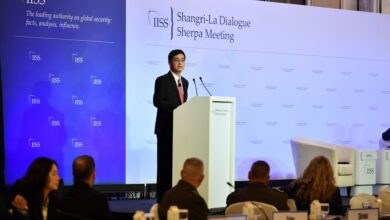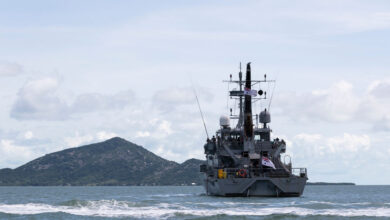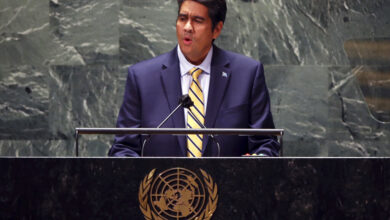Australia maintains tight control of domestically produced uranium

Tom Abke
The Australian government remains firm on a policy prohibiting the use of domestically produced uranium for military applications. That stance has yielded strict control over uranium exports to prevent their implementation in weapons of mass destruction. The rule also prevents Australia from using its uranium to fuel its forthcoming nuclear-powered submarines.
Australia has the world’s largest resource of uranium and is the world’s third-largest producer of the naturally occurring element, according to the government agency Geoscience Australia.
A growing desire to reduce demand for Russian fossil fuels and the need for a nonpolluting energy source’ is putting nuclear energy back in demand, The Economist newspaper reported in March 2022. With its abundant supply of uranium, this could be good news for Australia, according to Australian Mining, an industry journal. New investments are being made, including two uranium mines planned for Western Australia.
Canberra strictly regulates the country’s uranium exports, forbidding their use in nuclear weapons or “other military programs.” The’ export policy requires that Australian-obligated nuclear material must be precisely accounted for during its journey through the nuclear fuel cycle.
The trilateral security treaty among Australia, the United Kingdom and the United States, signed in September 2021 and known as AUKUS, precipitated an 18-month assessment of requirements regarding the delivery of nuclear-powered submarines to Australia, an Australian Defence Department spokeswoman told FORUM.
“The government has committed to Australia not undertaking uranium enrichment or reprocessing in support of the nuclear powered-submarine program,” she said.
Under the export policy, Australian-produced uranium may only be transferred to nations that have a bilateral nuclear cooperation agreement’ with Australia, she said. (Pictured: A uranium mine in northern Australia.)
Australia maintains 25 such agreements covering 43 countries, including the U.S., according to Australia’s Department of Foreign Affairs and Trade.
“Australia’s safeguards policy involves the careful selection of countries which are eligible to receive Australian uranium exports,” the spokeswoman said.
A 2007 uranium export agreement with Russia and one with Ukraine in 2016, however, have raised concerns in recent years, reaching a new level of alarm with Russia’s invasion of Ukraine in February 2022.
Under the agreement with Moscow, a uranium shipment was sent to Russia in 2010 for “exclusively peaceful purposes,” Australia’s Lowy Institute reported ’in February 2022. Uranium sales to Russia were suspended in 2014 after the downing of Malaysia Airlines Flight 17 in July of that year. A Dutch-led joint investigation concluded the airliner was downed by a Russian-made missile launched from pro-Russian separatist-controlled territory in Ukraine. No uranium has been shipped to Russia since 2014, the Lowy Institute added.
Australia shipped uranium to Ukraine in April 2021, the Independent Australia news journal reported. And the capture of Ukraine’s Chernobyl nuclear power plant by Russian forces in late February prompted speculation that Russia could seize nuclear material originating from Australia, according to Independent Australia. The likelihood of this happening remains low, according to analysts, as Chernobyl was decommissioned in 1986 after a deadly nuclear accident and no longer receives fuel.
One of Ukraine’s four active nuclear plants, the Khmelnytskyi facility in Netishyn, was controlled by Russian forces as of March 29, 2022, Reuters reported. Moreover, the shipment from Australia to Ukraine is believed to have been largely symbolic and relatively small. Ukraine has rich natural reserves of uranium, according to its Energy Ministry, and aims to be self-sufficient by 2027.
Tom Abke is a FORUM contributor reporting from Singapore.
IMAGE CREDIT: ISTOCK




